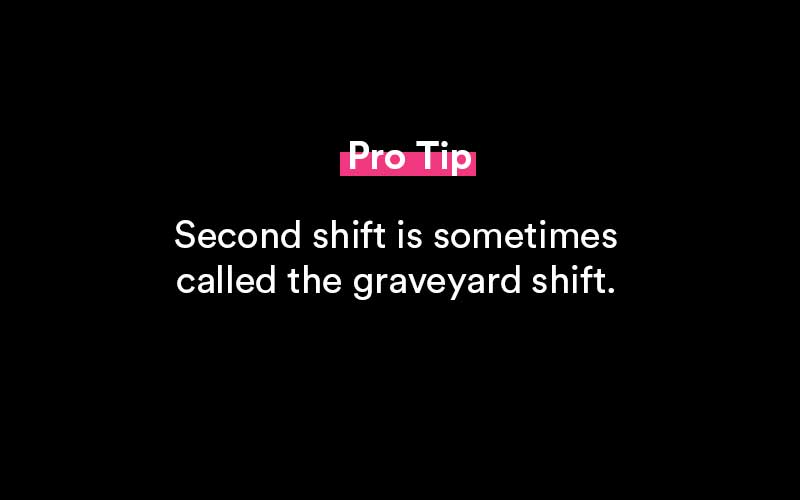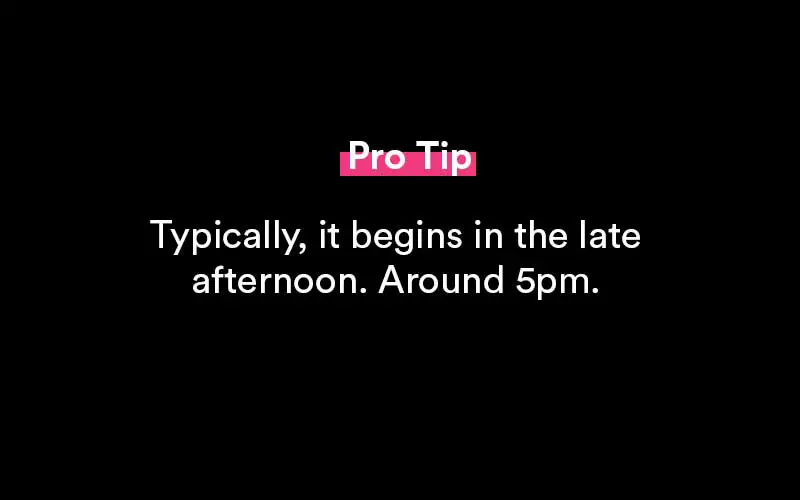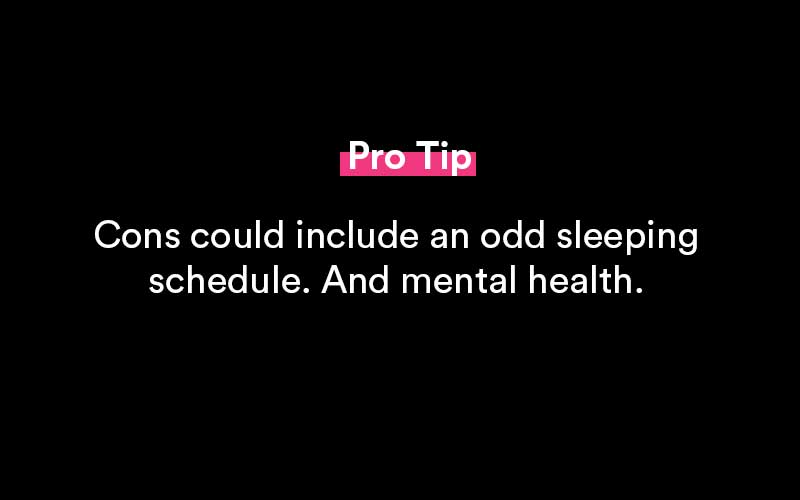Second Shift Hours - What '2nd Shift' Is, Benefits, Drawbacks
What is the second shift? And what are the second shift hours? Some companies demand employees to work 24 hours a day, seven days a week and assign shifts to guarantee that business activities are covered at all hours of the day and night.
Law enforcement and security, retail, grocery and convenience stores, transportation, emergency and healthcare, hospitality, and other businesses all provide shift work.
Shifts frequently overlap, allowing new personnel to easily replace those who left the prior shift.
What is second shift?
The second shift generally runs from 5 p.m. to 1 a.m. People who work the second shift typically have early mornings off but work late into the night in the afternoon.

If you enjoy working late and sleeping in the mornings, or if you have other obligations early in the day, the second shift could be ideal for you. The first shift (9 a.m. to 5 p.m.) and the third shift are two other work shifts (12 a.m. to 8 a.m.).
What are the second shift hours?
Second shift hours vary depending on the role you've been recruited for, but they usually begin in the afternoon and conclude at or before midnight. The most typical time range for a second shift is between 4 p.m. and 12 a.m.
This shift will take place just after the morning shift, also known as the first shift, so you won't have to get up early in the morning.
Additionally, if you work at a workplace that is accessible to the public 24 hours a day, or one that opens/closes sooner or later in the day than most other businesses, the common hours for a second shift will only deviate from the normal 4 p.m. and 12 a.m.
A second shift, on the other hand, usually includes working for 8 hours in the afternoon, through supper, and into the night.

Benefits of working second shift
If you've been assigned to second shifts or are considering scheduling adjustments, here are some of the advantages of working a second shift:
Going to be early
I'm going to bed early. Working a second shift, unlike working a morning shift, allows you to sleep in as long as you like. After all, if you don't have anything to do before your shift, you don't have to feel rushed to get up and get going.
Make it to appointments
Appointments are more convenient. You'll find it much simpler to arrange essential appointments when you're not sleeping in. When you don't have to work, doctors, banks, and government offices will all be open. Overall, your availability in the morning will make scheduling a lot easier.
A working shift that begins in the late afternoon provides more flexibility. And jobs that offer this can be a great way to ensure you can take care of your day-to-day needs during the daytime (or normal workday).
Can run errands during the day
It's time to run some errands. You'll have more time to perform activities like grocery shopping, going to the post office, or picking up medications if you're always free in the mornings.
Almost none of the companies will be closed during your spare time. Working the second shift might make it easier to schedule a doctor's appointment or visit a location during the week.

If you have children
When you have little children, this is really useful. If you're a parent with a child who isn't yet in school, working a second shift will allow you to care for them during the day.
Furthermore, because first shifts are more popular, your partner may be able to return home from the first shift and assume childcare responsibilities. You'll save money on childcare and spend more time with your child if you do it this way.
Caring for a pet
It'll be easier to look after your pet. If you've ever had a dog, you know that their needs may take over your life at times. You must consider their food routine, regular walks, and training sessions.
Even if you live somewhere where the sun sets at 4 p.m. in the winter, having a second shift allows you to exercise your dog throughout the day and get them ready for a nap before you leave.
Less commuting
There is less traffic. Because morning shifts are so popular, there is usually a lot of traffic in the morning and afternoon. If you work the second shift, though, you'll likely get at work before the peak of rush hour traffic. Even better, you won't have to deal with much traffic when you depart.
Less distractions
There are less distractions in the workplace. Morning shifts are often busier and more hectic. In the morning, the higher-ups are likely to be working on paperwork or other essential chores, and you could have a manager or two breathing down your neck.
Working the second shift, with this in mind, may help you to concentrate more on your present projects and worry less about clients, bosses, and other distractions.

Pay differences
Pay disparities. Companies frequently provide pay differentials for second shift personnel since morning shifts are more popular. As a result, second-shift workers often earn somewhat more than their first-shift counterparts.
Cons of working second shift
Here are the drawbacks of working the graveyard shift.
Back for sleep rhythm
It interferes with your circadian cycle. People are supposed to sleep when it becomes dark and wake up when it gets bright in general.
Of course, we all break that rule to various degrees, but working a second shift almost assures you'll be sleeping in far until sunrise.
Even if you finish work at a leisurely 11 p.m., you still have to come home and relax for a while before going to bed.
Can cause brain problems
It has the potential to damage your brain. Your brain stops operating to its full capacity when you receive less or poor quality sleep.
Second-shift employees, in particular, have more issues with memory and their capacity to comprehend new information.
Diet problems
It may result in dietary issues. Dinner is the most important meal of the day for most Americans, but when you work the second shift, you don't have time to prepare dinner for yourself.
Of course, careful meal preparation can help you avoid buying takeout or ordering delivery every time you work a second shift.
Mental health issues
It has the potential to cause mental health issues. Second-shift workers' circadian rhythms are continuously disrupted, which impacts the release of chemicals like serotonin and dopamine.
This can lead to sadness and other mood disorders, particularly in those who are already vulnerable to mental health problems.
Types of shifts
Businesses generally assign individuals to a certain shift but depending on their schedules and the needs of the company, you may be able to work different shifts each day of the week.
A rotating shift is when you work various shifts throughout the week. A fixed shift, on the other hand, is when you work one regular shift every day.
The following are some of the most frequent types of shifts and the corresponding working hours:
- First shift (Day shift): During regular business hours, the first shift generally runs from 8:30 a.m. to 5:30 p.m. or 9 a.m. to 6 p.m., with one hour for lunch. It usually begins in the morning and concludes in the afternoon.
- Second shift (Afternoon shift): This shift usually begins about 4 p.m. or 5 p.m. and ends around midnight. The afternoon shifts begin late in the afternoon and conclude late in the evening.
- Third shift (Night shift): The third shift, often known as the night shift, begins about midnight and ends around dawn or early morning. From 12 a.m. until 8 a.m., a normal night shift takes place.
- Split shift: Employees agree to work during two primary blocks of time when performing a split shift. An employee may, for example, perform two four-hour shifts in one day, from 8 a.m. to 1 p.m. and from 5 p.m. to 9 p.m.
- Weekend shift: A work shift that takes place over the weekend rather than throughout the week.
- Fixed shift: When employees perform the same sort of shift every day, they have a fixed shift. An employee may, for example, work the night shift every day of the week.
- Rotating shift: When the weekday schedule fluctuates, an employee works a rotating shift. They may, for example, work the first shift one day and the second shift the following.
Determining what works for you
The proper shift allows you to maintain a good work-life balance that suits your lifestyle and interests.
Each shift has its own set of advantages and disadvantages to consider.
Consider the following advantages and disadvantages before signing up for one of the shifts listed below:
- Night shift: A night shift may appeal to you if you love staying up late. Others find the night shift challenging because they must sleep during the day and remain up at night, which is contrary to the body's normal circadian cycles.
- Continuous shifts: Shift work can be difficult in various situations. Employers may, for example, ask employees to work numerous shifts in a row, which requires a great deal of energy and perseverance. Back-to-back shifts, on the other hand, can be preferred by certain people so that they may complete more of their work schedule sooner and have longer relaxation times afterward.
- Sudden schedule changes: For some employees, not having a steady schedule due to last-minute adjustments might be stressful, but for others who may get flexibility in exchange from their company, it can be preferred. When contemplating a job, find out how much notice your potential company generally gives when shifts change. Make sure you know what shifts you'll be working and if your schedule will be set or rotational.

Popular Resources

Featured
35+ Phone Interview Questions & Best Sample Answers
Phone interviews have become a core part of the process when attempting to find a secured placement for an open position. Companies receive massive responses from potential candidates for any..

Featured
12+ Best Questions To Ask A Recruiter
Concerning a job search, you might receive numerous offers from your recruiters. Before you choose one, you need to assess all the conditions, for which it is vital that you know everything associated with the offered position..

Featured
Answering "What Makes You Unique" In A Job Interview
Answering this question during a job interview requires more than knowing why you are unique as an individual. Yes, the true scientific answer is made up of two main components: your..

Featured
250+ Ice Breaker Questions for Life
An ice breaker question is a question that’s asked from one person to another person in order to act as a conversation starter. It brings a connection...

Featured
10 Best Answers to "What Motivates You?"
Open-ended questions like “What motivates you?” can elicit a deer-in-the-headlights reaction from job candidates if they are unprepared. It’s a broad question and can leave the interviewer..

Featured
Answering "How Did You Hear About This Position" In An Interview
A lot of interviewers ask this question - how did you hear about this position? This way they can judge you if you are a passive or an active job seeker..

Featured
8 Best Thank You Emails After an Interview (Samples, Free Templates)
Writing a thank you note after an interview says a lot about you as a potential employee. Most notably, it says that you care about the opportunities presented..

Featured
Writing a Resignation Letter (How To Write It, Samples)
Writing the perfect letter of resignation is more of an art than it is a science. And we’re going to cover how to master that art form in this full guide..

Featured
How to End a Letter (Example Salutations, Sign Off's)
Knowing how to end a business note or email is an important skill to develop. It helps portray a sense of confidence, respect and tone to your message..
